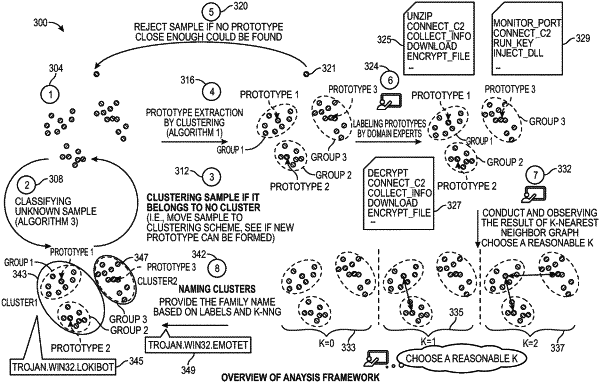| CPC G06F 21/566 (2013.01) [G06F 9/54 (2013.01); G06F 18/23213 (2023.01); G06F 21/568 (2013.01)] | 20 Claims |

|
1. A method of classifying a suspicious file, said method comprising:
determining a plurality of prototype feature vectors, each prototype feature vector having an associated group of feature vectors;
merging said groups of feature vectors into clusters without using a fixed-distance threshold, each of said clusters representing an identified malware family;
creating a feature vector for a behavior report of said suspicious file, said feature vector representing API (application programming interface) calls of said suspicious file;
determining a distance between said feature vector and one of said prototype feature vectors having a first malware family name;
when it is determined that said distance is less than a fixed-distance classification threshold, determining that said suspicious file belongs to said first malware family name; and
taking an action based upon said suspicious file belonging to said first malware family name.
|